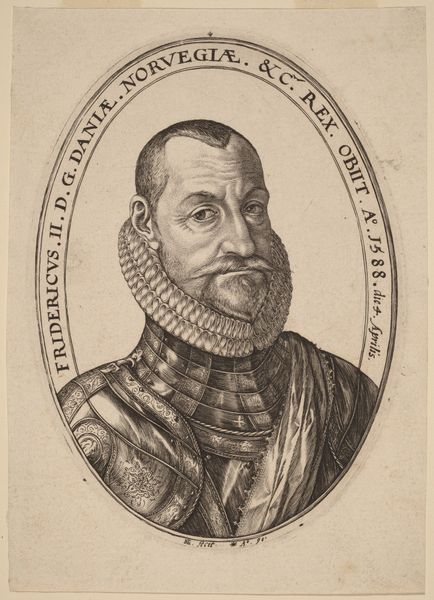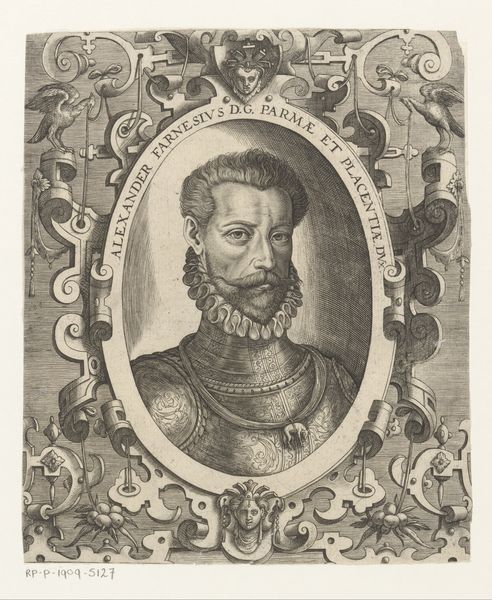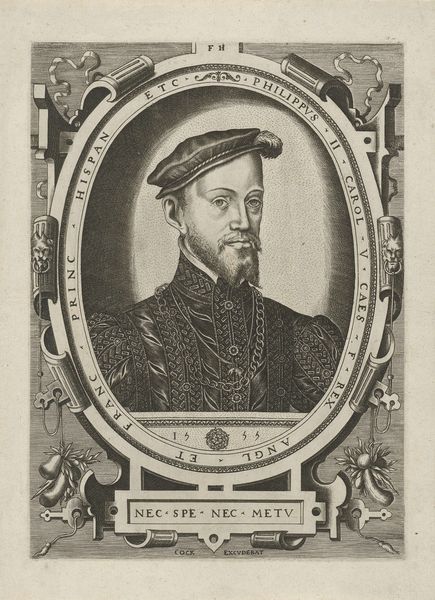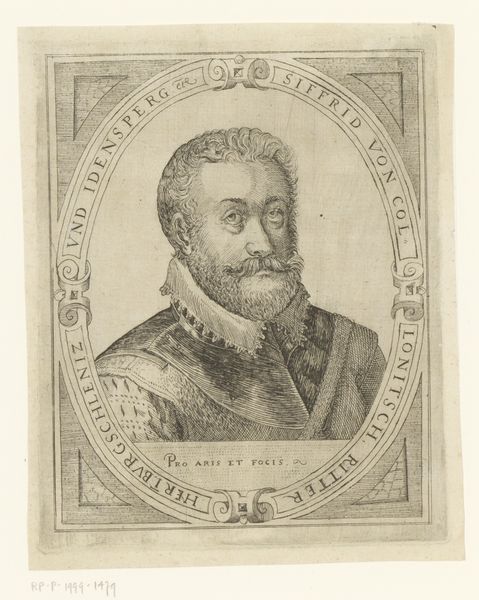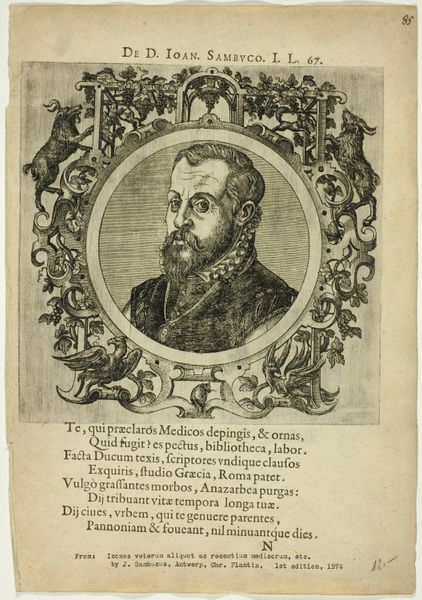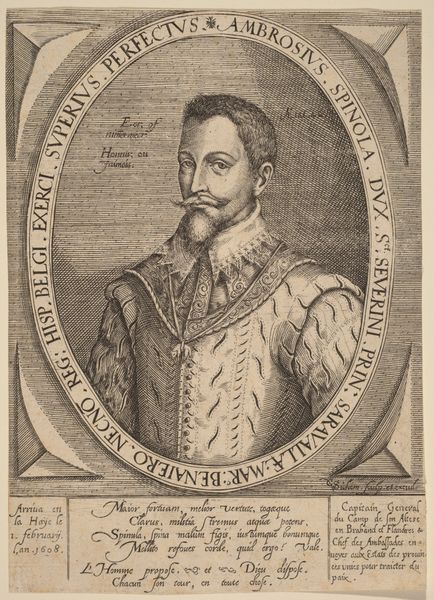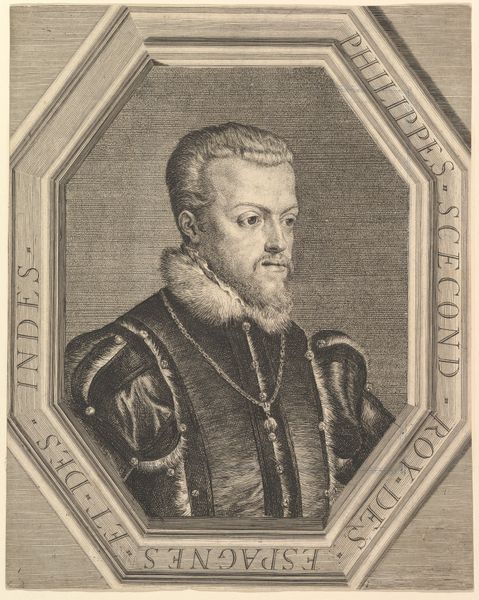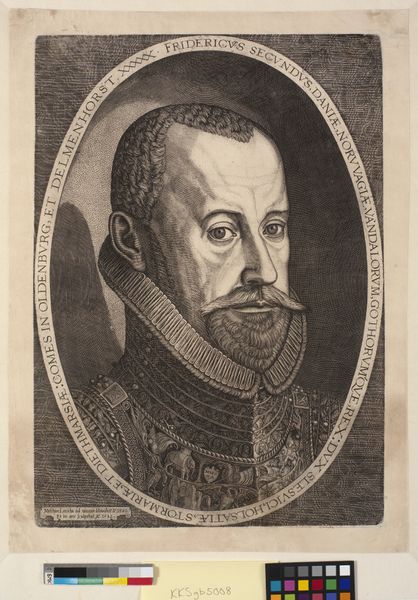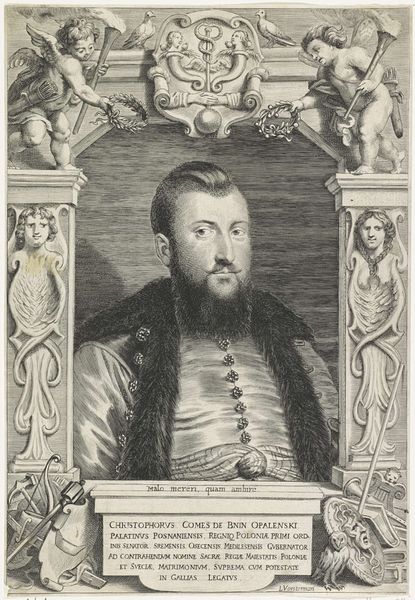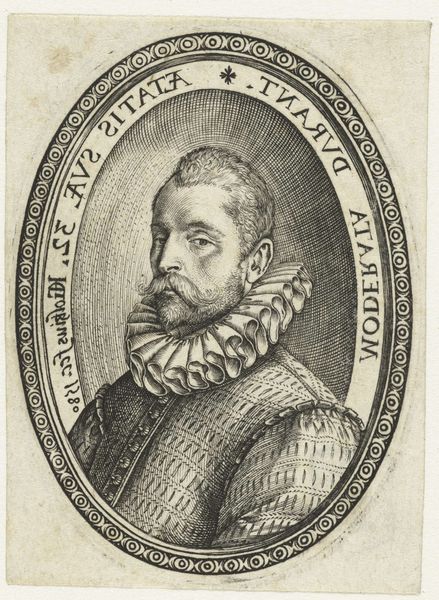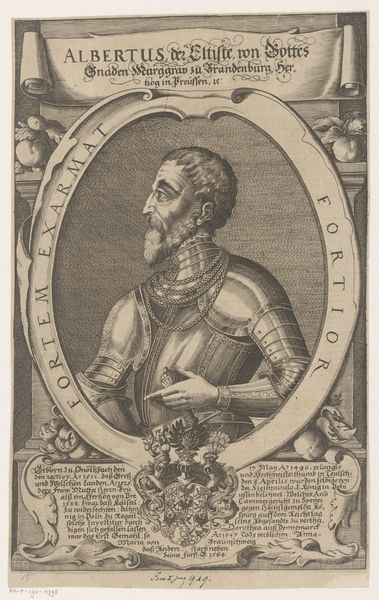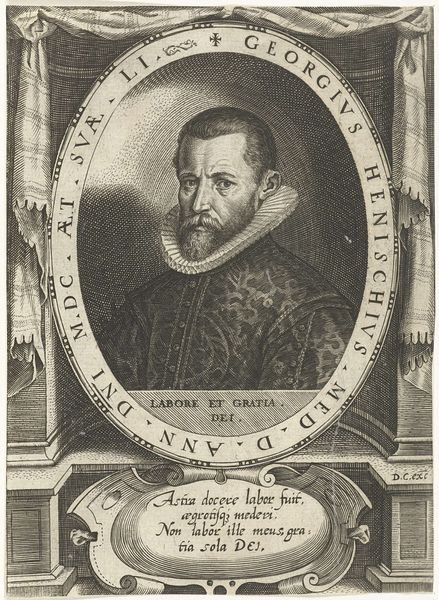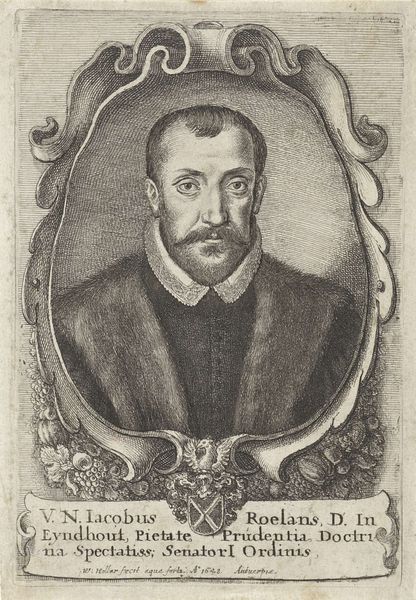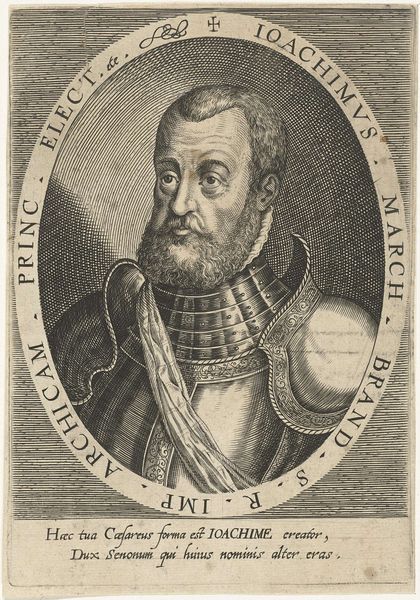
drawing, print, paper, engraving
#
drawing
# print
#
paper
#
11_renaissance
#
history-painting
#
engraving
Dimensions: 351 × 250 mm (plate); 416 × 324 mm (sheet)
Copyright: Public Domain
Curator: Here we have a print of "Garzia de' Medici," attributed to Adriaen Haelwegh. The date is estimated sometime between 1666 and 1761. It's an engraving on paper. Editor: There's something somber, yet regal about this portrait. The man’s intense gaze almost feels as though he's looking right at me across time. It’s incredibly detailed for a print, so vivid! Curator: Well, let's consider the materials. Engraving allowed for a level of detail previously unachievable. Prints democratized art; they allowed images of the elite, of historical narratives, to circulate more widely, shaping perceptions and consolidating power. Editor: It strikes me, too, that framing the image in that garland oval, that the engraver is actively shaping Medici’s presentation—literally containing him within the artwork and within history. Was this artist shaping Medici's legacy through distribution and material culture? Curator: Precisely. Consider how printmaking transformed artistic production. Instead of a unique painting viewed by few, multiple identical images could reach a larger audience. It's about dissemination and reproduction affecting Medici’s own cultural position. Editor: Almost like image politics avant la lettre? I can also read this image like theater in this case. This rendering looks hyperreal, not just for showing, but to move an audience through this spectacle. The text inscribed, it reads both propaganda and a form of political play. Curator: Yes! And think about the labor involved. The engraver had to painstakingly translate an image, reversing it, and committing it to the plate. It was a craft. What materials, what workshops did Haelwegh require? How much influence did the patron have? Editor: When you think of the act of distributing it and how history sees Medici today... is it really fair, or constructed on a narrative dependent on materiality and the distribution? So many hands must have worked in service to get it just right for patrons to mass reproduce the Medici's legacy. Curator: Absolutely. We see how the art market intertwined with propaganda, the cult of personality, and even early forms of advertising. Editor: Considering this lens of how art can reveal socio-political systems and manufacturing in early circulation culture, the act of print can become subversive. And, in turn, make it political and accessible for viewers to experience how that impacts them, even today! Curator: So true, looking at the labor that is involved and at who it benefits makes for a very nuanced story that makes us reflect on who or what this really serves.
Comments
No comments
Be the first to comment and join the conversation on the ultimate creative platform.
